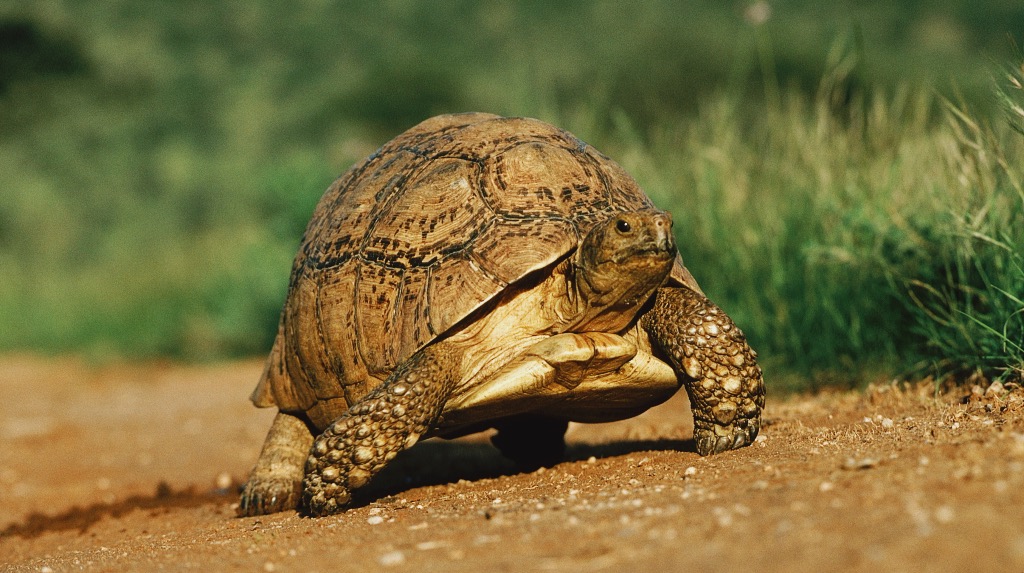Leopard tortoises, distinguished by their unique shell patterns and robust size, are fascinating subjects of ecological and conservation research. In the expansive wilds where they roam, studying these creatures poses significant challenges due to their slow-moving nature and the vast territories they inhabit. To overcome these hurdles, conservationists and researchers are turning to advanced tracking technologies for leopard tortoises, which provide invaluable insights into their behavior, habitat use, and population dynamics. This article explores the latest innovations in the field of wildlife tracking, focusing on the tools that are enhancing our understanding of leopard tortoises.
1. Satellite Telemetry
One of the most powerful tools in wildlife research is satellite telemetry. This technology involves fitting a small, durable GPS device onto the shell of a leopard tortoise. These GPS units collect data on the tortoise’s location at regular intervals and transmit this information back to researchers via satellites. This method allows scientists to track tortoises across vast and remote areas without the need for constant physical monitoring. The data collected helps in understanding migration patterns, territorial ranges, and even daily habits of these tortoises.
2. Radio Frequency Identification (RFID)
Radio Frequency Identification (RFID) is another crucial technology used in monitoring leopard tortoises. Each RFID tag contains a unique identifier that emits signals to a receiver when in proximity. By embedding these tags in the tortoises, researchers can easily scan for individuals at close range, which is particularly useful during physical examinations or in smaller, controlled study areas. This method is less invasive and provides a reliable way to ensure individual tortoises are healthy and thriving in their natural habitat.
3. Motion-Activated Cameras
Motion-activated cameras, or trail cameras, are extensively used in wildlife studies, including those focusing on leopard tortoises. Strategically placed throughout tortoise habitats, these cameras are triggered by movement and can capture video and images of the tortoises in their natural environment. This not only aids in population counts but also in observing behavioral patterns without human interference, providing a candid look into the lives of these creatures.
4. Drone Surveillance
Drones offer a bird’s-eye view of tortoise habitats, making them excellent for monitoring large areas with minimal disturbance to wildlife. Equipped with high-resolution cameras, drones can capture detailed images and videos of hard-to-reach places. For leopard tortoises, drone footage can help identify preferred habitats, detect threats like poachers or predators, and assist in mapping the distribution of populations over time.
5. Environmental DNA (eDNA)
Environmental DNA (eDNA) is a revolutionary method that detects genetic material shed by animals into the environment. By collecting soil or water samples from tortoise habitats, researchers can detect the presence of leopard tortoises even without seeing them. This technology is especially useful in tracking the distribution of tortoises in dense vegetation or muddy areas where traditional tracking methods may falter.
6. Smartphone Apps and Citizen Science
The rise of smartphone technology has paved the way for innovative contributions through citizen science. Apps designed for tracking wildlife allow both researchers and the general public to record sightings of leopard tortoises. This data is invaluable for filling gaps in traditional research methods, expanding the geographical coverage of studies, and building comprehensive datasets that can inform conservation strategies.
Conclusion
The integration of these advanced tracking tools has revolutionized the study of leopard tortoises in the wild. By providing detailed and accurate data, these technologies not only enhance our understanding of tortoise ecology but also bolster conservation efforts aimed at protecting these remarkable creatures. As these tools continue to evolve, they promise even greater insights into the natural world, helping us safeguard biodiversity for future generations.
For further reading on innovative approaches to wildlife tracking, visit authoritative resources that delve into the technological advancements in ecological research.

“Coffee trailblazer. Social media ninja. Unapologetic web guru. Friendly music fan. Alcohol fanatic.”

